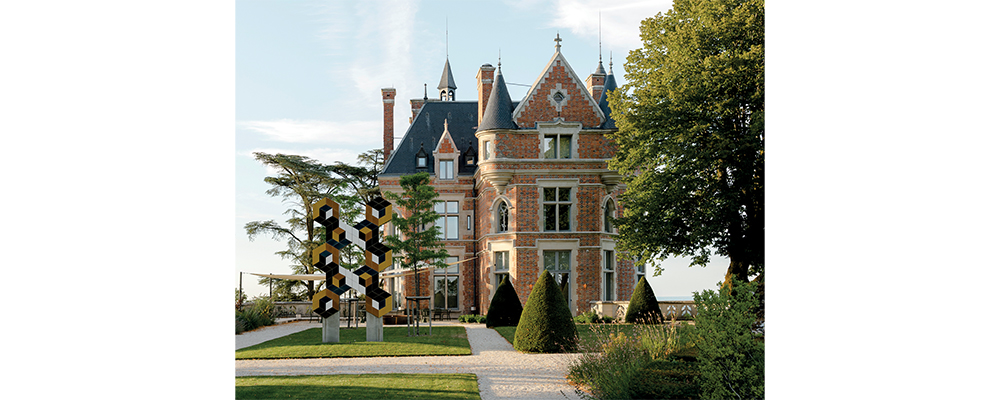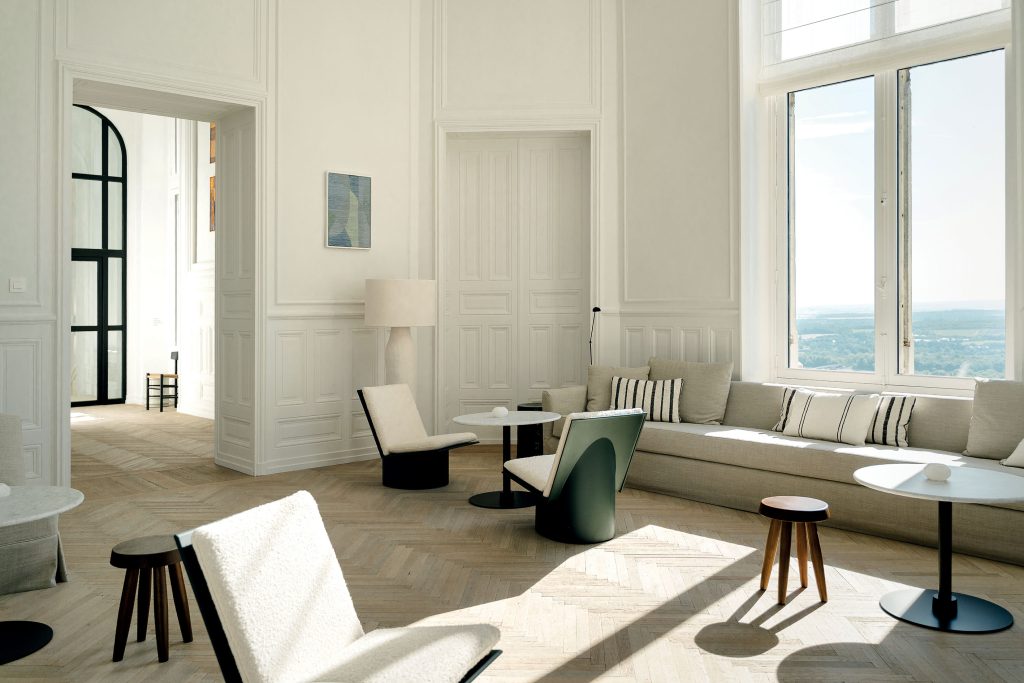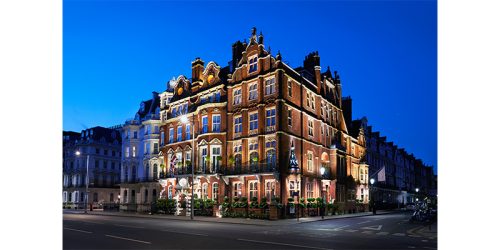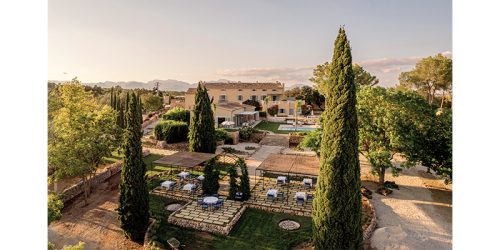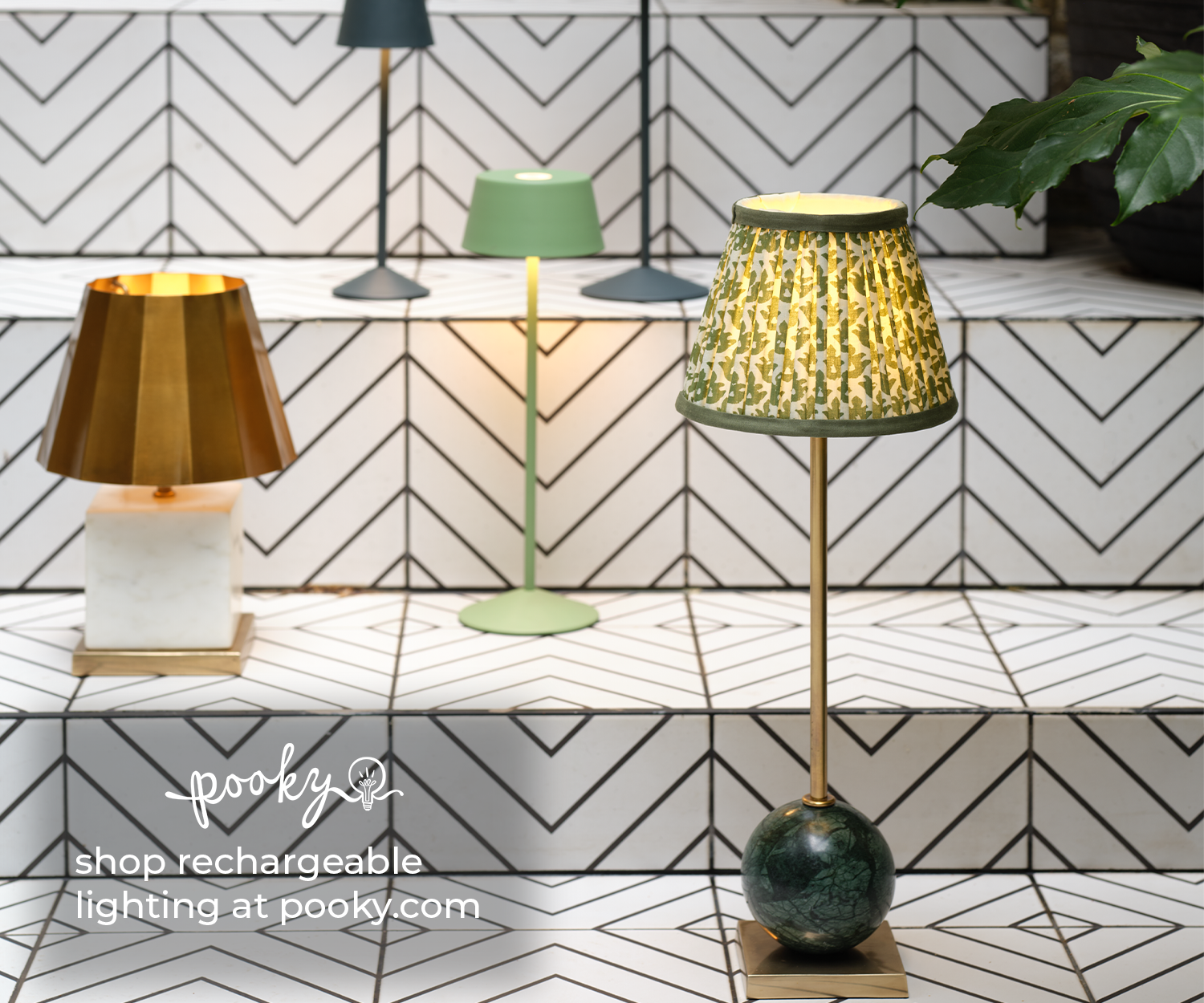Les Hauts de Sancerre, France
Passion project sees heritage gem reborn as luxury hotel.
Perched high on a rocky spur, the Château de Sancerre has long watched over the Loire Valley in France – a familiar silhouette but closed off from the world. In the late 19th century, the Marnier-Lapostolle family took ownership and transformed the ancient building into a private residence hidden behind trees.
 Now, after being closed to the general public for more than 150 years, the charming building has thrown open its doors as a luxury hotel, Les Hauts de Sancerre, with eight suites, a gourmet pop-up restaurant, a wellness space and a wine library in the original 12th-century cellar.
Now, after being closed to the general public for more than 150 years, the charming building has thrown open its doors as a luxury hotel, Les Hauts de Sancerre, with eight suites, a gourmet pop-up restaurant, a wellness space and a wine library in the original 12th-century cellar.
Next year, more guestrooms will open, along with a signature restaurant, a permaculture garden, and a landscaped pool. Between 2026 and 2027, the estate will expand further with 10 to 15 unique accommodations tucked into the surrounding forest. A full spa experience is also being imagined.
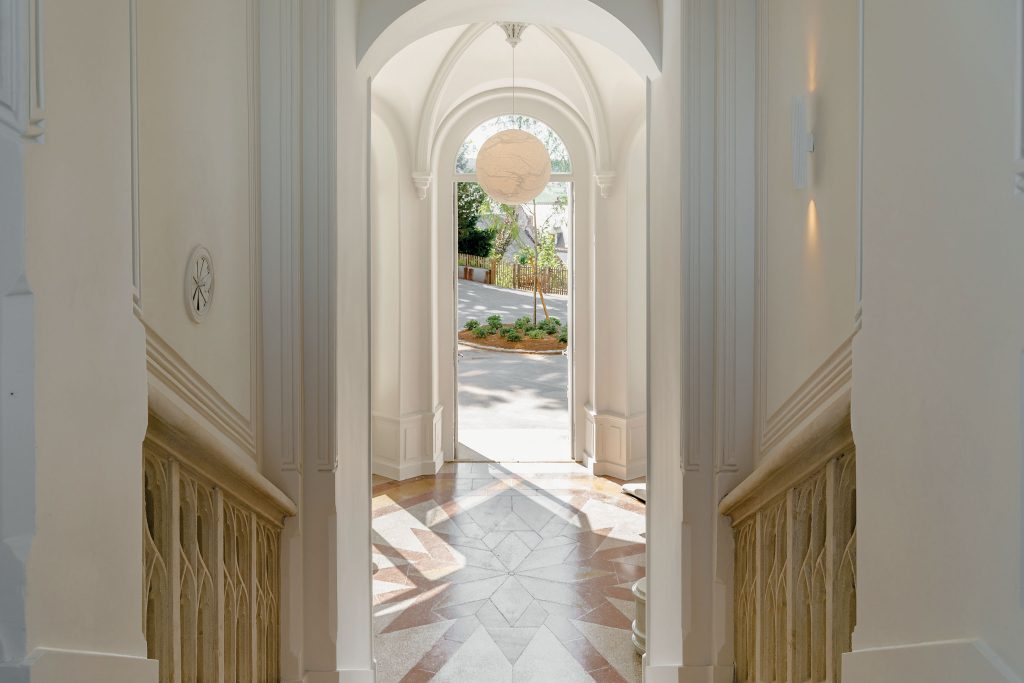
Les Hauts de Sancerre, France. After being closed to the general public for more than 150 years, the charming building has thrown open its doors as a luxury hotel.
The fairy tale awakening of this historic gem is the result of a bold move by husband and wife team David Chicard and Audrey Dumont. David grew up between the Nièvre and Sancerre regions, with the château ever present on the horizon – an emblematic landmark etched into his childhood memories. Years later, he and his wife restored a family home near Nevers, discovered a shared love of hosting and reconnected with the region. They created Collectible.house, a tourism investment fund devoted to breathing new life into exceptional, often forgotten sites.
In 2022, they dropped a letter into the letterbox of the château, expressing their dream of acquiring the place. To their astonishment, the Marnier-Lapostolle family agreed and soon the château was theirs. Their first major project had begun.
David and Audrey opened the gates to the public for a special exhibition honouring Victor Vasarely, grandfather of the Op art movement, last year. More than 30,000 visitors wandered the grounds, explored the historic tower and stood in awe of the surrounding vineyards. They intend that Les Hauts de Sancerre will remain partially open to the public, hosting exhibitions, events and guided tours.
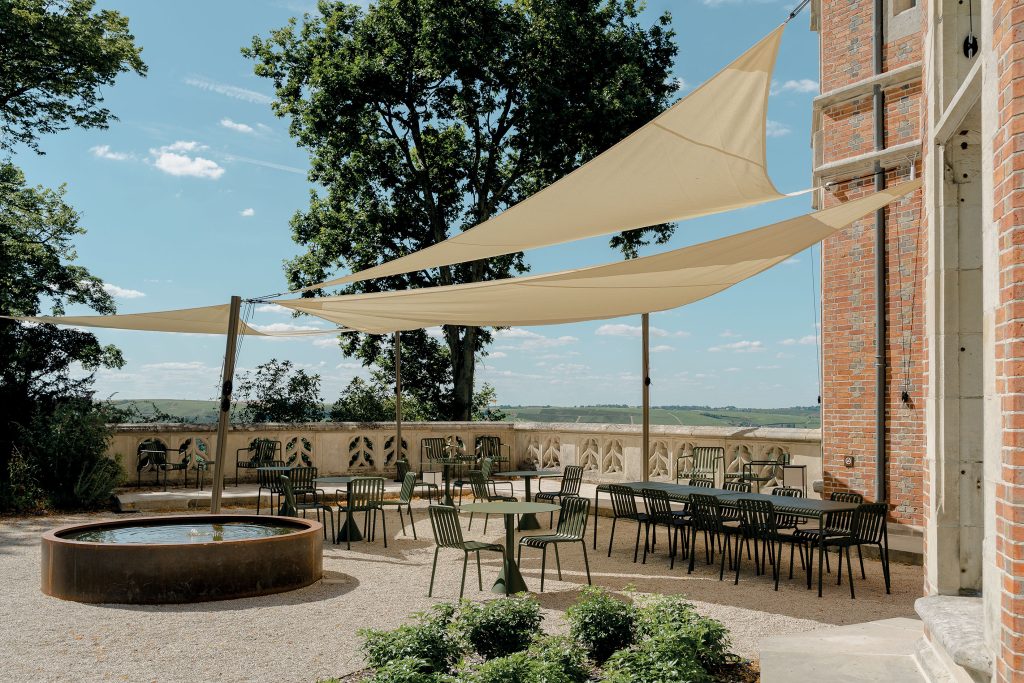
The owners intend that Les Hauts de Sancerre will remain partially open to the public, hosting exhibitions, events and guided tours.
Interior designer Jérôme Lescrenier was appointed to transform the château into a glorious hotel. His mission was to honour its soul while bringing a new, understated elegance. The project respects the château’s original architecture, with meticulous attention to space, light and noble materials. Natural stone, fine woods and soft, muted fabrics shape a serene and welcoming atmosphere. Every element has been chosen to create an experience where heritage meets contemporary life enjoyed with passion.
“We aimed to rediscover the balance of historical proportions while creating a space with fluid, intuitive flow. The goal was to craft a place that feels both grand and lived-in – a place where you simply feel good,” said Jerome.
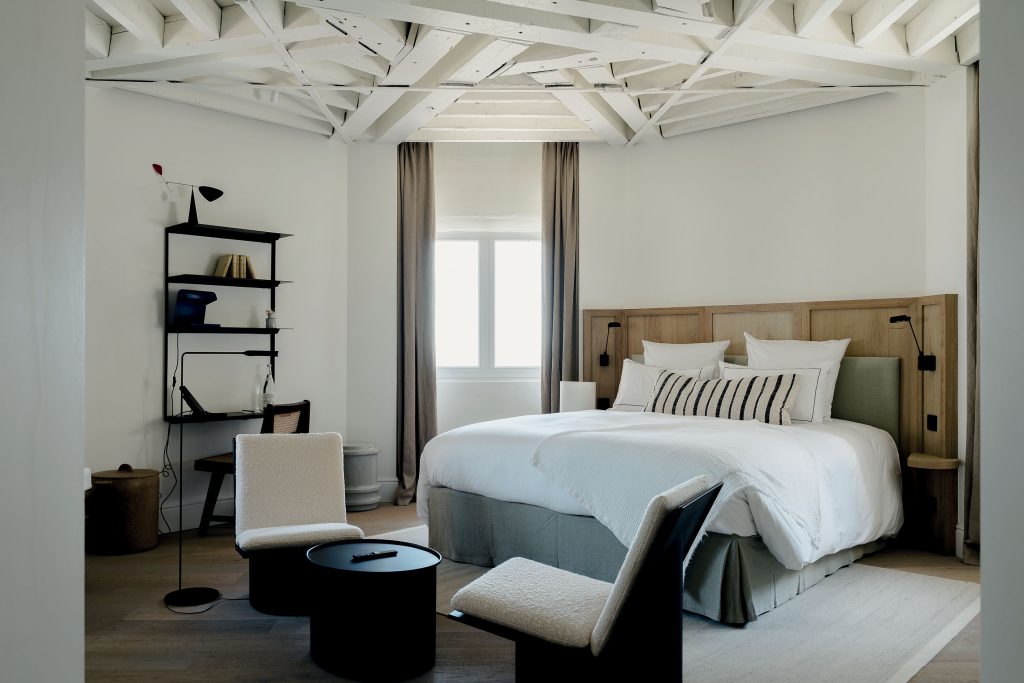
Natural stone, fine woods and soft, muted fabrics shape a serene and welcoming atmosphere. Every element has been chosen to create an experience where heritage meets contemporary life enjoyed with passion.
Artistic direction is led by Stanislas de Poucques, former head of the Brussels Museum of Contemporary Art, who has shaped a refined yet accessible visual universe, blending curated furniture, original works and site-specific pieces. For this inaugural season, two European artists have taken over the space. In the lobby and salons, Belgian textiles artist Emma Terweduwe presents a series of 15 woven works. Wool, linen and cotton converge in geometric compositions that evoke softness, abstraction and materiality.
In the suites, each room features a piece by Roan van Oort, a young Dutch painter whose textured canvases are made from sand, lime and earth. Subtle and raw, his paintings reflect the imperfection of nature and echo the tones of the château and its landscape. Outside, Hexa 8, a monumental sculpture and vestige of the Vasarely exhibition, continues the dialogue between art and environment, anchoring this living gallery in both past and present.

In the lobby and salons, Belgian textiles artist Emma Terweduwe presents a series of 15 woven works. Wool, linen and cotton converge in geometric compositions that evoke softness, abstraction and materiality.
True to their vision of meaningful hospitality, Audrey and David offer guests a series of immersive experiences, each one deeply rooted in the Sancerre region. Among them, a visit to the nearby Charlois Cooperage offers a rare glimpse into the art of barrel making. The experience ends with a guided tasting that reveals how wood and wine speak the same language of time and transformation. For a more artistic journey, guests can head to La Borne, an iconic village of contemporary ceramics, just 20 minutes from the château. There, they’ll meet artisan potters, explore ancestral kilns and tour the renowned ceramics centre.
The estate offers curated wine tours led by local winemakers or sommeliers. These guided journeys through the Sancerre vineyards end in a 13th-century cellar or at the château itself, with a tasting that uncovers the layers of Sauvignon Blanc and Pinot Noir – the signature grapes of this terroir.



